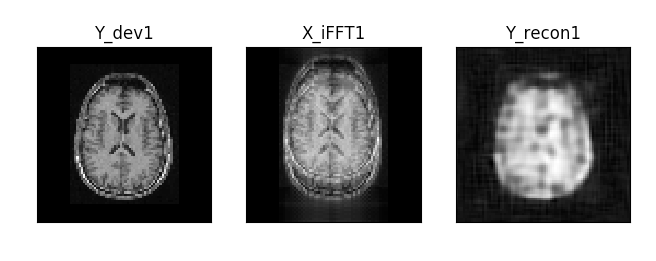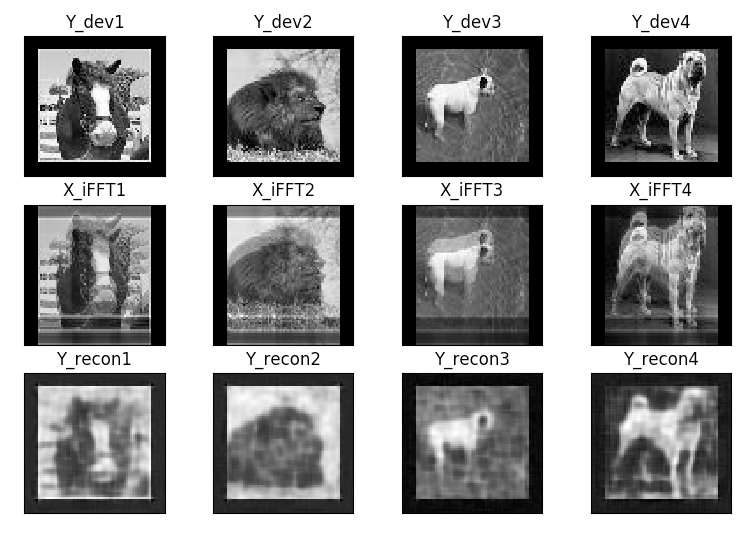This is my implementation of the AUTOMAP algorithm described in the following paper: B. Zhu, J. Z. Liu, B. R. Rosen, and M. S. Rosen. Image reconstruction by domain transform manifold learning. arXiv preprint arXiv:1704.08841, 2017. https://arxiv.org/abs/1704.08841
NB1: I run the code at AWS cluster, using the following AMI: Deep Learning AMI (Ubuntu), and the following instance: p3.2xlarge. In addition, I use CPU’s memory to initialize the second fully-connected layer for 128x128 images (otherwise, there is memory error) NB2: I use the following Python package to download images from ImageNet: imagenetscraper 1.0 (https://goo.gl/QK6f8p)
I encourage you to contact me if you have any questions, comments, or suggestions: tetiana.d@gmail.com.
The code uses data in image space and corresponding frequency space to teach a CNN model to do a reconstruction of an MRI image. The architecture consists of fully-connected (FC) and convolutional (Conv) layers and is the following: FC1 -> tahn activation -> FC2 -> tanh activation -> Conv1 -> ReLU activation -> Conv2 -> ReLU activation -> de-Conv
generate_input.py
This includes function load_images_from_folder, which creates training set for a model. It loads images into array Y and performs a Fourier transform and saves both real and imaginary parts of it into array X.
Optional normalizing of data and rotation of input images are available.
generate_input_motion.py
This includes function load_images_from_folder, which creates training set for a model. It loads images into array Y and "moves" it by 8 pixels the performs a Fourier transform and combined the frequency space of both Y images (before and after it was moved) - as if the patient moved by 8 pixels in one direction in the middle of the acquisition. Then the function saves both real and imaginary parts of motion-corrupted frequency space into array X.
Optional normalizing of data and rotation of input images are available.
myAutomap.py
This includes the CNN model using TensorFlow.
myAutomap_recon.py
Uses forward propagation to reconstruct image from frequency space using the trained model, which was saved in myAutomap.py
(Very) preliminary results:
Y_dev - original images; X_iFFT - images reconstructed from frequency space corrupted by motion - ghosting artifacts are clearly seen; Y_recon - images reconstructed using trained model - ghosting is gone!, however, images look very blurry - the cost was still quite high - needs optimizing.
Hyperparameters: learning rate - 0.00002, 7500 images (30000 after augmentation), 80x80 resolution, 200 epochs.

